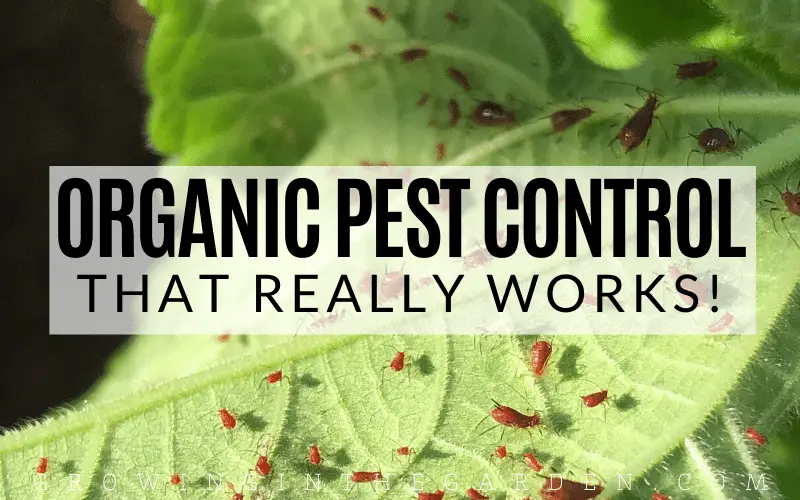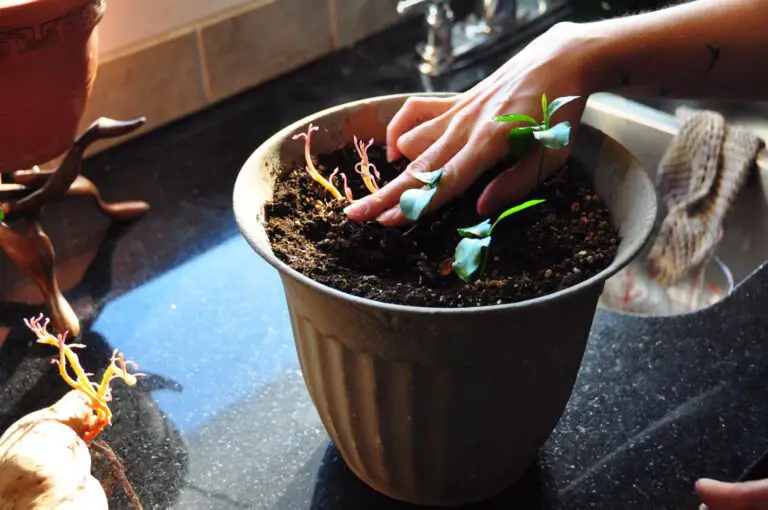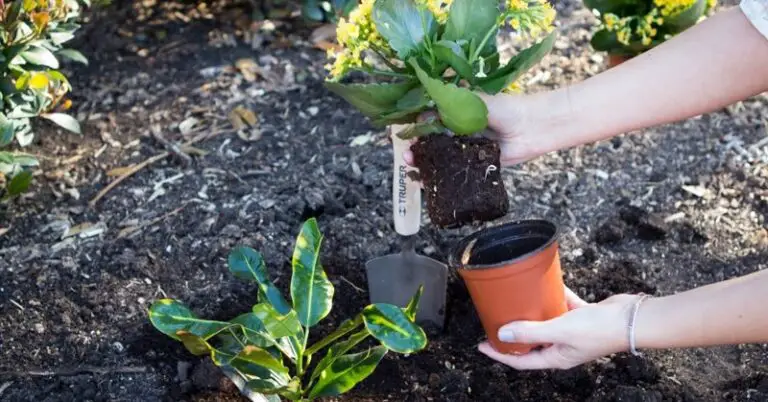Natural Pest Control: 6 DIY Recipes for Your Garden
Did you know that over 90% of garden pests can be managed without harsh chemicals? If you’re tired of unwanted critters munching on your plants, we’ve got you covered. Welcome to our guide on natural pest control: “6 DIY Recipes for Your Garden.” In this post, we’ll share easy, effective, and eco-friendly solutions that you can whip up with common household items.
From garlic spray to neem oil mixtures, these recipes will help you protect your garden without harming the environment. Ready to save your plants and keep your garden flourishing naturally? Let’s dive into these simple, trustworthy methods for a healthier garden!
Table of Contents
Understanding the Common Pests in Your Garden
Gardening is a rewarding and fulfilling experience, but it can also come with its fair share of challenges, one of which is dealing with garden pests. These pesky creatures can wreak havoc on your plants, causing damage to leaves, flowers, and even the roots. Understanding the common pests that may invade your garden is crucial in order to effectively combat them and protect your precious plants.

1. Aphids:
- Description: Small insects, varying in color (green, black, pink, etc.), found in clusters.
- Habitat: Often found on the undersides of leaves.
- Damage: Suck plant sap, causing leaves to yellow and wilt.
2. Caterpillars:
- Description: Worm-like appearance, varying in size and color.
- Habitat: Found on leaves or hiding in plant crevices.
- Damage: Devour foliage, leading to significant damage or defoliation.
Identifying Pests:
- Aphids: Look for small clusters on the undersides of leaves, sticky residue (honeydew), and curled or yellowing leaves.
- Caterpillars: Check for chewed leaves, frass (caterpillar droppings), and the presence of larvae on plants.
Proactive Measures:
- Regular Inspection: Frequently check plants for signs of pests.
- Early Detection: Identify pests early to prevent widespread infestations.
- Natural Predators: Introduce beneficial insects like ladybugs (for aphids) and birds (for caterpillars) to your garden.
- Organic Solutions: Use neem oil or insecticidal soap for aphids and Bacillus thuringiensis (Bt) for caterpillars.
Stay tuned as we delve deeper into each pest and explore effective methods for pest control and prevention. By familiarizing yourself with these common garden pests and their telltale signs, you can take proactive measures to protect your plants and maintain a healthy garden.
Identifying the Harmful Effects of Chemical Pesticides
Chemical pesticides have long been a go-to solution for gardeners dealing with pests. However, it is important to understand the harmful effects that these pesticides can have on our environment and our health.

- Toxicity to Beneficial Insects and Pollinators:
- Chemical pesticides can be highly toxic to non-target organisms like bees, butterflies, and other beneficial insects.
- The death of these important pollinators disrupts the delicate balance of ecosystems.
- Contamination of Soil, Water, and Air:
- Chemical pesticides can contaminate soil, water, and even air, posing a significant threat to the overall health of the environment.
- This widespread contamination can have far-reaching consequences for various organisms and ecosystems.
- Negative Health Impacts on Humans:
- Exposure to chemical pesticides has been linked to various health problems in humans, including respiratory issues, neurodevelopmental disorders, hormonal disruptions, and certain types of cancer.
- Vulnerable populations, such as children, pregnant women, and individuals with compromised immune systems, are particularly at risk.
- Disruption of Ecological Balance:
- The indiscriminate use of chemical pesticides can disrupt the delicate balance of ecosystems by killing off important species and altering food webs.
- This disruption can lead to the decline of biodiversity and the overall health of the environment.
In conclusion, the harmful effects of chemical pesticides on non-target organisms and the environment are well-documented. The toxicity to beneficial insects, contamination of natural resources, and negative health impacts on humans highlight the urgent need for more sustainable and environmentally-friendly pest management practices.
The Benefits of Natural Pest Control Methods
Natural pest control methods offer a range of benefits for gardeners seeking effective and environmentally friendly solutions. One of the key advantages is the avoidance of harmful chemicals present in traditional pesticides.
1. Safety for Beneficial Insects, Plants, and Humans:
- Synthetic Pesticides: Contain toxic substances that can harm non-target species, including beneficial insects like bees and ladybugs, plants, and even humans.
- Natural Methods: Use non-toxic substances and practices, reducing risks to beneficial organisms and human health.
2. Sustainability:
- Environmental Impact: Natural pest control methods do not deplete resources or disrupt ecosystems, promoting long-term garden health.
- Eco-Friendly Practices: Methods such as companion planting help maintain biodiversity and a balanced ecosystem.
3. Companion Planting:
- Definition: Planting certain species together to naturally deter pests.
- Benefits: Enhances garden biodiversity, promotes beneficial insects, and reduces pest populations without harmful chemicals.
Examples of Companion Planting:
- Marigolds: Planting marigolds with vegetables can repel nematodes and other pests.
- Basil: Planting basil with tomatoes can deter tomato hornworms and improve flavor.
- Garlic: Planting garlic around roses can repel aphids and other insects.
Additionally, homemade remedies and solutions, such as garlic spray or vinegar spray, are cost-effective alternatives that can be easily made using common household items. By embracing natural pest control, gardeners can achieve effective results while minimizing their impact on the environment.
Essential Oils: Nature’s Pest Repellents
Essential oils have gained popularity as a natural and effective solution for repelling pests in gardens. Derived from various plants, these oils contain compounds known to deter insects and other garden pests.
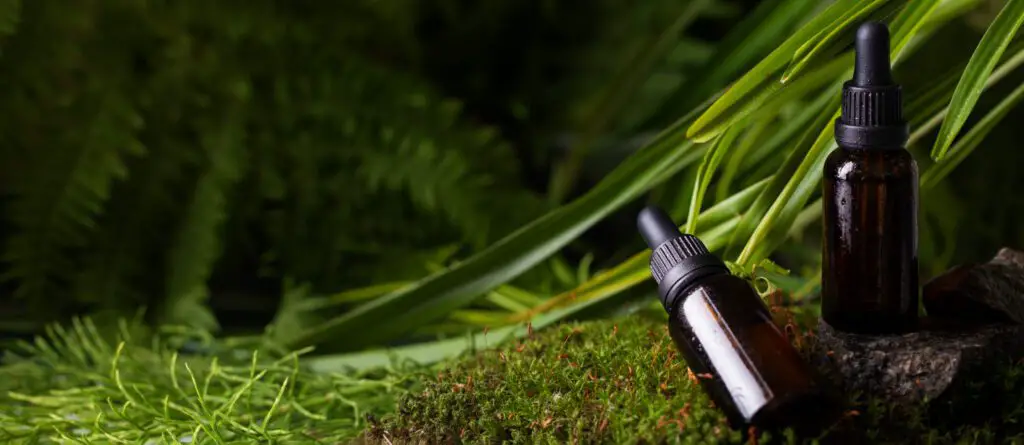
Peppermint Oil
- Peppermint oil has a strong scent that acts as a powerful repellent against pests like ants, aphids, and spiders.
- To use, dilute a few drops of peppermint oil in water and spray it around the garden to keep these pests away.
lavender oil
- Lavender oil not only has a pleasant fragrance, but also repels pests such as mosquitoes, fleas, and moths.
- Mix a few drops of lavender oil with water and spray it onto plants or in areas where pests tend to gather to create a natural barrier.
Rosemary Oil
- Rosemary oil is effective against pests like cabbage worms and carrot flies.
- Its strong aroma disrupts the insects’ ability to locate their preferred plants, deterring them from infesting your garden.
Other effective essential oils for pest control include:
- Eucalyptus oil: Can help keep rats out of the home
- Clove, nutmeg, cinnamon, and basil oils containing eugenol: Effective against a wide range of insects
- Oregano, basil, mint, and marjoram oils containing carvacrol: Also effective against many pests
- Cinnamon oil containing trans-cinnamaldehyde: Toxic to insects
- Thyme oil containing thymol: Insecticidal properties
To use these oils, you can diffuse them into the air, make a homemade bug spray, or apply them topically while diluting with a carrier oil. Essential oils are a natural and effective way to control pests in your garden and home.
I used both Essentially KateS Peppermint Essential Oil and NaturoBliss 100% Undiluted Lavender Essential Oil to make my natural pest spray, and the results have been outstanding. The peppermint oil’s strong, minty aroma effectively repels pests such as ants and mosquitoes, while the lavender oil adds a soothing fragrance that also keeps unwanted insects at bay. Both oils are 100% pure and undiluted, ensuring their potency and effectiveness in my homemade spray.
The dropper included with each bottle makes it easy to measure and mix the oils accurately. However, it’s important to use these oils with care, as their strong scents can be overpowering and they should be properly diluted to avoid skin irritation. Overall, combining these high-quality essential oils has allowed me to create a powerful, natural pest repellent that is both effective and pleasant-smelling.
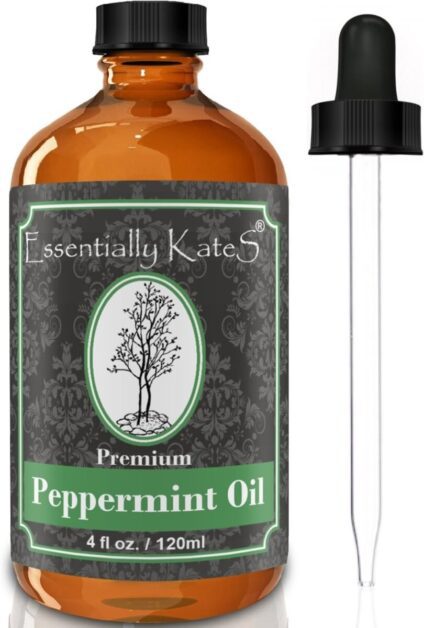
✅ Aromatherapy Benefits: Provides a refreshing and invigorating scent that can boost mood and energy.
✅ Versatile Use: Can be used in diffusers, sprays, cleaning products, and personal care items.
✅ High-Quality Oil: 100% pure peppermint oil, with no additives or fillers, ensuring potency and efficacy.
✅ Dropper Included: Comes with a detailed dropper for precise measurement and easy application.
✅ Large Bottle: The 4-ounce bottle offers good value and lasts a long time.
❌ Skin Sensitivity: May cause irritation or allergic reactions if applied directly to the skin without dilution.
❌ Pet Sensitivity: Can be harmful to pets, particularly cats and dogs, if not used carefully.
❌ Staining: Oil can stain fabrics or surfaces if not diluted or applied properly.
❌ Storage: Needs to be stored in a cool, dark place to maintain its potency and prevent degradation.
❌ Price: Slightly more expensive than some other essential oils, but the quality justifies the cost.
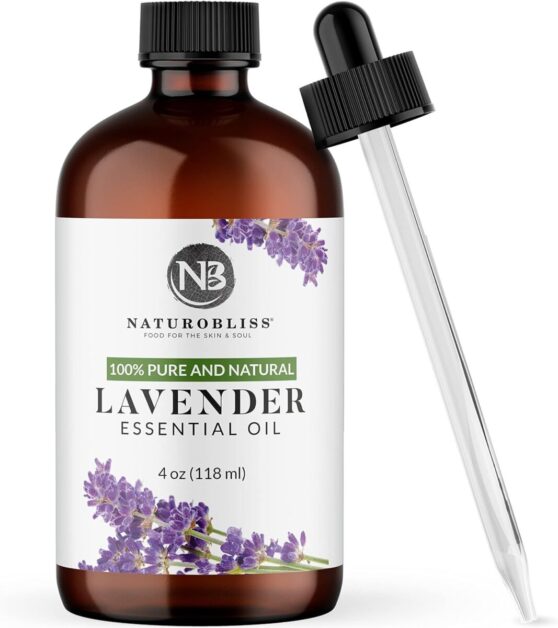
✅ Soothing Aroma: Provides a calming and pleasant lavender scent, great for relaxation.
✅ Multipurpose Use: Can be used in pest sprays, aromatherapy, skin care, and cleaning products.
✅ High Quality: 100% pure and undiluted, ensuring potent and effective results.
✅ Easy to Use: Comes with a dropper for accurate and easy application.
✅ Large Bottle: The 4-ounce size offers good value and lasts a long time.
❌ Skin Sensitivity: Needs to be diluted properly to avoid potential skin irritation or allergic reactions.
❌ Pet Safety: Can be harmful to pets if not used with caution, especially around cats.
❌ Staining Potential: The oil can stain fabrics and surfaces if not diluted or applied carefully.
❌ Storage Needs: Must be stored in a cool, dark place to maintain its potency over time.
❌ Higher Price: Slightly more expensive than other essential oils, but the quality justifies the cost.
Creating Your Own Homemade Insecticidal Soap
Insecticidal soaps are an effective and environmentally friendly solution for controlling common garden pests. Unlike chemical pesticides, which can harm beneficial insects and contaminate the soil, homemade insecticidal soaps are safe for plants and animals. Making your own insecticidal soap is not only cost-effective but also allows you to have full control over the ingredients used.
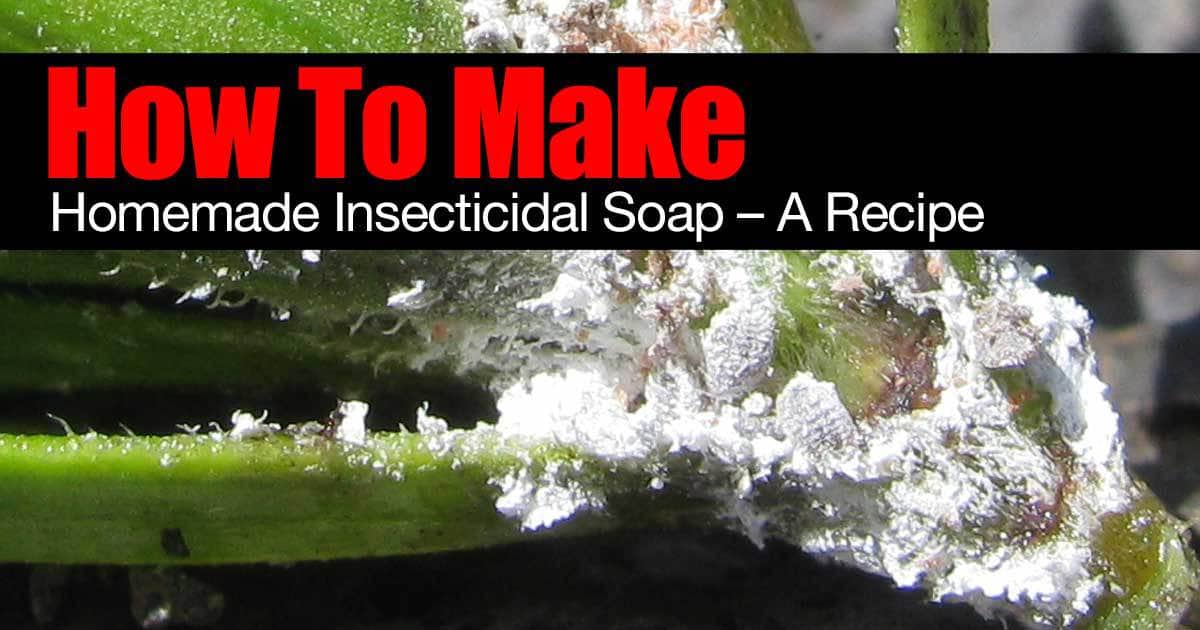
DIY Homemade Insecticidal Soap Recipe
Ingredients:
- Liquid soap (mild, without harsh additives or perfumes)
- Water
Instructions:
- Prepare Soap Solution: Dilute a few tablespoons of liquid soap in a gallon of water. Opt for mild soap varieties like Castile soap or insecticidal soap concentrate, available at garden centers.
- Mix Thoroughly: Ensure the soap is completely dissolved in the water, creating a uniform solution.
- Transfer to Spray Bottle: Pour the soap solution into a spray bottle for convenient application.
- Test Compatibility: Before applying to your plants, test the insecticidal soap on a small, inconspicuous area. Monitor the test area for any adverse reactions for a day or two.
- Application: Once confirmed safe, spray the insecticidal soap directly onto the affected areas of the plant, including the undersides of leaves where pests often hide.
- Repeat as Needed: For persistent pest infestations, reapply the insecticidal soap every few days or as recommended until the pests are effectively controlled.
Caution: Avoid using harsh soaps or concentrations that may harm plants. Always follow safety instructions and test new solutions on a small scale before widespread application.
By creating your own homemade insecticidal soap, you can effectively manage garden pests while minimizing the use of harmful chemicals. Whether you have aphids, spider mites, or other common pests, this natural solution can help protect your plants without harming the environment. Give it a try and watch your garden thrive in a safer and more sustainable way.
Utilizing Garlic Spray to Deter Pests
Garlic is not only a popular ingredient in our kitchens, but it can also be a powerful tool in keeping pests at bay in our gardens. Utilizing garlic spray as a natural deterrent is a safe and effective way to protect your plants without the use of harmful pesticides.

DIY Garlic Pest Repellent Spray
Ingredients:
- Several cloves of garlic
- Water
Instructions:
- Prepare Garlic Mixture: Crush several cloves of garlic and place them in a container.
- Add Water: Cover the crushed garlic with water, ensuring it is fully submerged.
- Steep Garlic: Allow the garlic and water mixture to steep for a day or two. This allows the garlic’s natural compounds to infuse into the water.
- Strain Mixture: After steeping, strain out the garlic solids, leaving only the liquid.
- Transfer to Spray Bottle: Pour the garlic-infused liquid into a spray bottle for easy application.
- Apply Liberally: Spray the garlic solution generously onto the leaves and stems of your plants, focusing on areas where pests are likely to feed or reside.
- Reapply as Needed: Reapply the garlic spray every week or after heavy rainfall to maintain its effectiveness in deterring pests.
Note: The strong odor of garlic may persist after application. Consider testing the spray on a small area of your plants before widespread use to ensure compatibility. Additionally, avoid spraying directly on flowers to prevent any adverse effects on pollinators.
By incorporating garlic spray into your pest control strategy, you can deter unwanted pests from feasting on your garden, ensuring your plants remain healthy and thriving.
Harnessing the Power of Neem Oil for Pest Control
Neem oil has emerged as a powerful tool in the fight against garden pests. Derived from the seeds of the neem tree (Azadirachta indica), this natural pesticide is renowned for its effectiveness and low toxicity to beneficial insects.
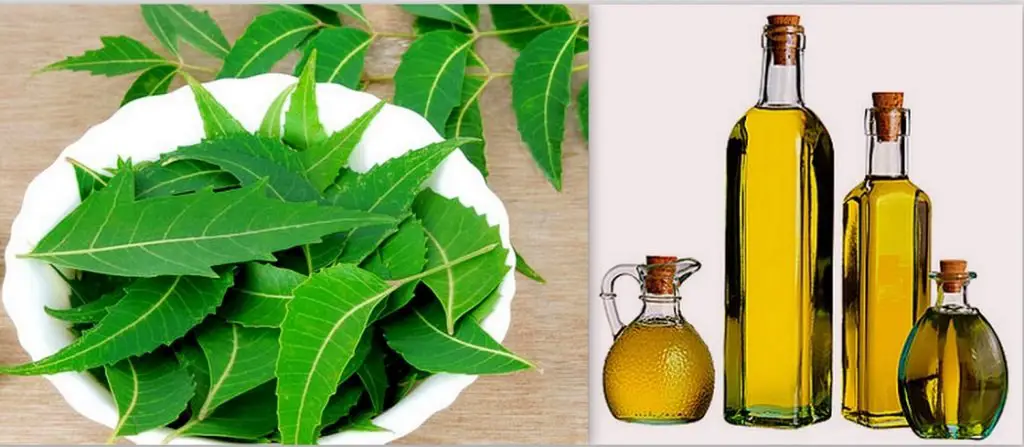
Active Compounds in Neem Oil
- Neem oil contains active compounds like azadirachtin that disrupt the life cycle of pests, inhibiting their feeding, growth, and reproduction.
- When sprayed on plants, neem oil forms a protective barrier that repels or suffocates a wide range of pests, including aphids, whiteflies, mealybugs, and spider mites.
Environmental Impact
- Neem oil has minimal impact on the environment as it breaks down rapidly and does not accumulate in soil or water sources.
- Its selective activity targets harmful insects while sparing beneficial predators like ladybugs and bees.
Benefits of Neem Oil
- Neem oil helps preserve the natural balance in gardens by effectively managing pest populations.
- It is a valuable tool for gardeners looking for eco-friendly pest control methods.
Application Caution
- Neem oil should be applied with caution to avoid harm to plants or non-target organisms.
- Following manufacturer instructions and conducting a small-scale test before widespread application is advisable.
By following these steps and guidelines, gardeners can harness the benefits of neem oil for pest control effectively and responsibly.
DIY Vinegar Spray: A Natural Solution for Garden Pests
Vinegar, a pantry staple, can be an effective tool in controlling garden pests. Its acidic nature and strong odor make it a natural deterrent for insects and other unwanted visitors. By creating a DIY vinegar spray, you can easily protect your plants without the need for harmful chemical pesticides.

Ingredients:
- Vinegar
- Water
Instructions:
- Mix Vinegar and Water: In a spray bottle, combine equal parts vinegar and water.
- Dilute Vinegar: It’s important to dilute the vinegar with water to prevent it from being too strong and potentially harming your plants.
- Shake Well: Secure the spray bottle’s lid and shake the mixture well to ensure thorough mixing.
- Apply Directly: Once the vinegar spray is ready, apply it directly onto the affected plants or around the garden area where pests are commonly found.
- Repeat as Needed: Reapply the vinegar spray as needed, especially after rainfall or when new pest activity is observed.
Note: While vinegar spray can effectively repel many garden pests due to its acetic acid content, it may not be as effective against larger pests like rabbits or deer. In such cases, consider implementing additional pest control measures tailored to the specific pest challenges in your garden.
Effective Use of Diatomaceous Earth in Pest Management
Diatomaceous earth, also known as DE, is an effective and natural solution for managing pests in your garden. This powdery substance is composed of the microscopic remains of aquatic organisms called diatoms.

Mechanical Pest Control:
- When applied, diatomaceous earth (DE) acts as an abrasive material, damaging the exoskeleton of insects upon contact. This leads to dehydration and eventual death of the pests.
Low Toxicity:
- DE poses minimal health risks to humans and pets, making it a safe alternative to chemical pesticides when used correctly. Gardeners can feel confident using DE without worrying about harmful effects on their loved ones or the environment.
Broad Spectrum Efficacy:
- DE offers effective control against a wide range of garden pests, including aphids, ants, beetles, caterpillars, and slugs. Its versatility stems from its physical action, making it a reliable option for managing various pest challenges in the garden.
Application Tips:
- Dust DE onto the leaves, stems, and soil around your plants to create a barrier against pests.
- Ensure DE remains dry to maintain its efficacy, and reapply as needed, especially after rainfall.
- Regular monitoring of your garden coupled with strategic use of diatomaceous earth can help keep pests at bay, promoting a healthy and thriving garden environment.
Embrace the power of diatomaceous earth as a natural and eco-friendly solution for pest control in your garden. With its mechanical action and gentle approach, DE offers effective protection for your plants while prioritizing safety and sustainability.
The following table explain more about the use of Diatomaceous Earth:
| Pest Management Aspect | Description |
| Target Pests | Effective against a variety of pests including insects with exoskeletons, like ants, fleas, beetles, and crawling insects. |
| Physical Structure of DE | Composed of fossilized diatoms, which are microscopic, sharp-edged particles that penetrate the exoskeleton of insects. |
| Application Areas | Apply DE to areas where pests are present or likely to travel, such as entry points, around plants, or near storage areas. |
| Indoor Application | Sprinkle a thin layer of DE in areas where pests are a concern, such as along baseboards, beneath appliances, or in cracks and crevices. |
| Outdoor Application | Apply DE around the perimeter of your home, garden beds, and other outdoor areas where pests may be active. |
| Garden Use | Dust DE on plants to control crawling insects; avoid applying when plants are in bloom to protect pollinators. |
| Application Tools | Use a duster, shaker, or applicator to evenly distribute DE, ensuring thorough coverage without excessive clumping. |
| Reapplication Frequency | Reapply DE after rain or heavy watering, as it becomes less effective when wet. |
| Safety Precautions | Wear a mask to avoid inhaling DE dust during application. |
Harris Diatomaceous Earth Powder Duster is an effective and natural solution for pest control. The powder works by dehydrating pests like ants, bed bugs, and cockroaches. It’s safe for pets and children, easy to apply with the included duster, and suitable for both indoor and outdoor use.
However, it’s messy to apply, loses effectiveness when wet, and requires regular maintenance and reapplication. Additionally, it can cause respiratory irritation if inhaled, so wearing a mask during application is recommended. Despite these drawbacks, it’s an excellent choice for long-term, organic pest control.
- Effective Pest Control: Highly effective at eliminating a wide range of pests including ants, bed bugs, cockroaches, and fleas by dehydrating them.
- Non-Toxic: Safe to use around pets and children as it is composed of natural diatomaceous earth without harmful chemicals.
- Easy Application: The included powder duster allows for easy and precise application in hard-to-reach areas.
- Long-Lasting: Remains effective as long as it stays dry, providing long-term pest control without frequent reapplication.
- Versatile Use: Can be used both indoors and outdoors, making it a flexible option for various pest control needs.
- Organic Gardening: Approved for organic use, making it suitable for organic gardening and pest control in vegetable gardens.
- Messy Application: Can be messy to apply, with fine dust that can spread and be difficult to clean up.
- Ineffective When Wet: Loses its effectiveness when it gets wet, necessitating reapplication after rain or exposure to moisture.
- Respiratory Irritation: Inhalation of the fine dust can cause respiratory irritation; it’s recommended to wear a mask during application.
- Slow Action: Takes time to kill pests, as it works by gradually dehydrating them, which may not be ideal for severe infestations needing quick control.
- Not a Barrier: Doesn’t work as a barrier treatment; pests must come into direct contact with it for it to be effective.
- Regular Maintenance: Requires regular maintenance and reapplication in areas with heavy pest traffic to maintain effectiveness.
Coffee Grounds: A Natural Pest Barrier
Coffee grounds are not just for brewing a rich cup of coffee; they can also serve as a natural pest barrier in your garden. These grounds are an excellent way to deter pests and protect your plants without the use of harmful chemicals.The high nitrogen content in coffee grounds not only enhances the fertility of the soil, but it also acts as a potent deterrent against common garden pests.
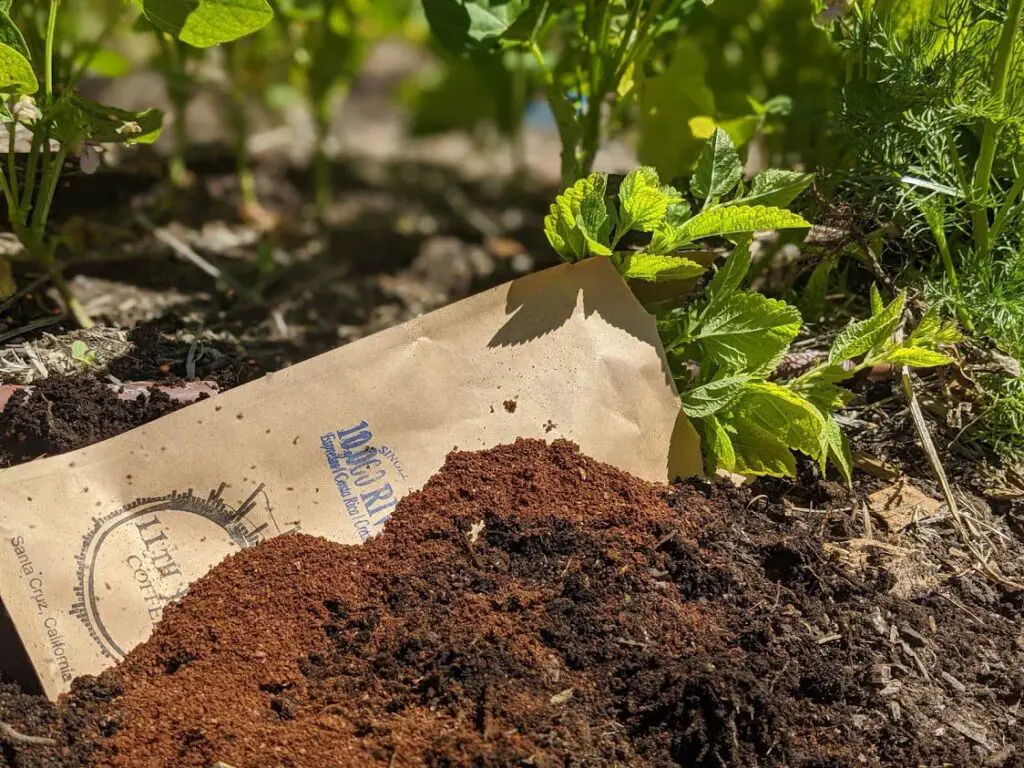
Repelling Slugs and Snails
- Coffee grounds have an abrasive texture that irritates the soft bodies of slugs and snails, deterring them from approaching your plants.
- Sprinkle coffee grounds around the base of your plants or create a protective border to keep these pests at bay.
Repelling Ants
- The strong aroma of coffee grounds disrupts the sensory signals of ants, discouraging them from invading your garden.
- Place coffee grounds in areas prone to ant activity to keep them away from your plants.
Repelling Cats
- Cats dislike the strong scent of coffee grounds and will avoid areas where it is present.
- Strategically place coffee grounds in locations where cats tend to frequent, such as garden beds, to prevent them from using your garden as a litter box.
Soil Benefits
- As the coffee grounds decompose, they release valuable nutrients like nitrogen, potassium, and phosphorus that enrich the soil and promote healthy plant growth.
- The increased acidity from coffee grounds benefits acid-loving plants like blueberries, azaleas, and rhododendrons.
By using coffee grounds as a natural pest barrier, gardeners can effectively protect their plants from a variety of common pests while also improving the overall health and fertility of their garden soil.So, the next time you finish your morning coffee, remember that those grounds have a valuable purpose beyond the cup – they can be a natural pest barrier for your garden.
Companion Planting: A Natural Pest Control Strategy
Companion planting is a natural pest control strategy that has been used for centuries by gardeners around the world. It involves planting mutually beneficial crops together to repel pests, attract beneficial insects, and improve overall plant health.
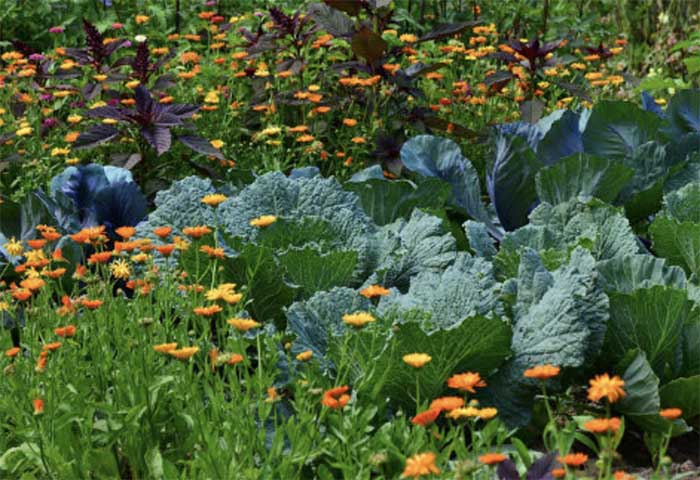
Promoting Biodiversity and Sustainability:
- Companion planting reduces reliance on chemical pesticides, fostering a more sustainable and environmentally friendly approach to gardening.
- By cultivating diverse plant communities, gardeners encourage biodiversity and create resilient ecosystems that naturally deter pests.
Tomato and Basil:
- Basil emits a strong aroma that repels pests like aphids, whiteflies, and tomato hornworms, benefiting neighboring tomato plants.
- In return, tomatoes provide support and shade for basil, creating a mutually beneficial relationship between the two plants.
- When used together in cooking, tomatoes and basil complement each other’s flavors, enhancing culinary experiences.
Marigolds and Vegetables:
- Marigolds possess a potent scent that repels pests such as nematodes, aphids, and cucumber beetles, protecting nearby vegetable crops.
- Additionally, marigolds attract beneficial insects like ladybugs and parasitic wasps, which prey on garden pests and contribute to pest control.
- Planting marigolds alongside vegetables like tomatoes, peppers, and cucumbers can improve crop health and yield while reducing pest damage.
Embracing Natural Solutions:
- Companion planting offers a natural and holistic approach to pest management, leveraging the symbiotic relationships between plants to create harmonious garden ecosystems.
- By integrating companion planting techniques into their gardening practices, individuals can nurture healthier plants, minimize pest pressure, and support thriving ecosystems.
Cultivating Harmony in the Garden:
- Through thoughtful companion planting, gardeners can harness the power of nature’s synergies to promote plant health and resilience.
- By fostering symbiotic relationships between plants, gardeners can create vibrant and biodiverse garden spaces that thrive in harmony with the natural world.
Embrace the beauty of companion planting and unlock the potential of nature’s partnerships to cultivate flourishing gardens that are abundant, sustainable, and resilient.So, next time you plan your garden layout, consider incorporating companion plants to enhance your pest control strategy and reap the benefits of a thriving garden.
Attracting Beneficial Insects to Combat Garden Pests
Attracting beneficial insects to your garden can be an effective and natural way to combat pesky garden pests. These helpful insects play a vital role in maintaining a healthy ecosystem and can significantly reduce the need for chemical pesticides.

Plant a variety of flowers, herbs, and native plants to create a balanced ecosystem that attracts beneficial insects.
Nectar-rich flowers and plants provide essential food sources, while others offer shelter and breeding sites for beneficial insects.
Ladybugs: These predators target aphids, a common garden pest, helping to keep their populations under control.
Lacewings: Voracious feeders on mites and caterpillars, lacewings contribute to pest management in the garden.
Hoverflies, parasitic wasps, and ground beetles are other examples of beneficial insects that prey on garden pests.
Incorporate companion planting techniques to attract and support beneficial insects.
Minimize pesticide use to avoid harming beneficial insect populations.
Provide water sources, such as shallow dishes filled with water or moist sand, to meet the hydration needs of beneficial insects.
By fostering a diverse and welcoming environment for beneficial insects, gardeners can harness the power of nature to control pest populations naturally.
Embrace sustainable gardening practices that prioritize ecological balance and promote harmony between plants and insects.
Physical Barriers: Protecting Your Garden from Unwanted Visitors
Physical barriers can be incredibly effective in protecting your garden from unwanted visitors.
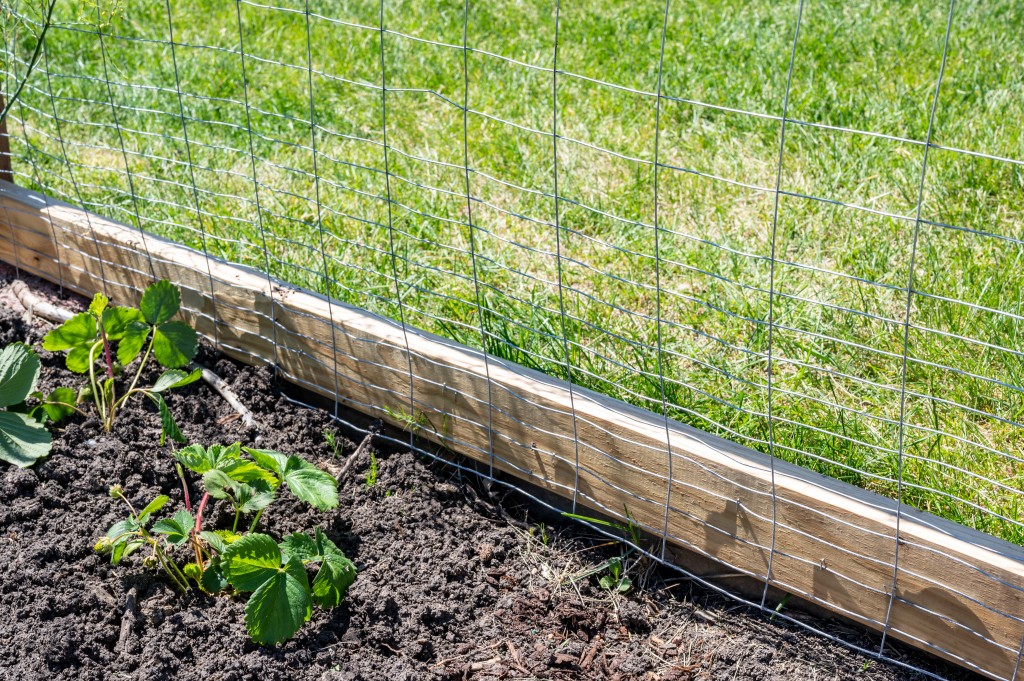
Fences and Walls
- Install fences or walls around the perimeter of your garden to create a physical boundary that deters pests.
- Fences and walls provide a visual deterrent, making pests think twice before attempting to invade your plants.
- Choose the appropriate fence height and material based on the specific pests you are trying to keep out.
Netting and Mesh
- Use netting or mesh to create a protective barrier around your garden or individual plants.
- Adjust the mesh size based on the target pests – smaller mesh for insects, larger mesh for birds or animals.
- Hang netting directly over plants or use it to enclose your entire garden space.
Row Covers and Cloches
- Place lightweight row covers or cloches directly over individual plants or rows to protect them from pests.
- Row covers are particularly effective against insects, creating a barrier that prevents them from reaching your plants.
- These covers allow sunlight, air, and water to pass through while keeping pests out.
By implementing these physical barriers, you can effectively protect your garden from a wide range of pests without relying on harmful chemicals or pesticides. Regular monitoring and maintenance of these barriers is essential for ensuring their continued effectiveness.
Regular Monitoring and Maintenance for a Pest-Free Garden
Regular monitoring and maintenance are essential tasks for maintaining a pest-free garden. By regularly inspecting your plants and taking preventive measures, you can effectively minimize the presence of pests and ensure the health and vitality of your garden.
- Visual Inspection:
- Look for signs of pest activity such as chewed leaves, wilting plants, discolored foliage, or the presence of insects on or around your plants.
- Inspect both the upper and lower surfaces of leaves, stems, and soil for any indications of pests.
- Traps for Monitoring:
- Consider using sticky traps to monitor and catch pests like aphids, whiteflies, and fungus gnats.
- Place traps strategically near susceptible plants or areas with high pest activity to monitor the pest population effectively.
- Maintenance Tasks:
- Engage in regular maintenance tasks like pruning, weeding, and proper watering to support pest management efforts.
- Keep your garden clean and well-maintained to minimize pest habitat and reduce the risk of infestations.
- Debris Removal:
- Remove plant debris, fallen leaves, and weeds to eliminate hiding places for pests and improve air circulation in your garden.
- This practice helps prevent conditions that favor pest development.
- Effective Watering:
- Water your plants appropriately, avoiding overwatering or underwatering, as these conditions can weaken plants and make them more vulnerable to pests.
- Proper watering promotes plant health, making them more resilient against pest damage.
In conclusion, regular monitoring and maintenance are key to maintaining a pest-free garden. By actively inspecting your plants, employing traps, and implementing proper maintenance practices, you can stay one step ahead of pests and ensure the overall health and productivity of your garden. Stay tuned for the next section on additional strategies for pest control!
For further information watch the video:
FAQ
How can I identify common pests in my garden?
To identify common pests in your garden, carefully observe the plants for signs of damage or unusual behavior. Look for chewed leaves, holes, wilting, discoloration, or any other signs of pest activity. You can also inspect the soil for pests like grubs or slugs.
Are chemical pesticides harmful to the environment?
Yes, chemical pesticides can have harmful effects on the environment. They can contaminate soil, water sources, and harm beneficial insects. Additionally, prolonged use of chemical pesticides can lead to the development of pesticide-resistant pests.
What are the benefits of natural pest control methods?
Natural pest control methods are safer for the environment, beneficial insects, and humans. They do not leave harmful residues on plants or in the soil. Additionally, natural pest control methods are often more sustainable and cost-effective in the long run.
How can essential oils be used as pest repellents?
Essential oils, such as peppermint, lavender, or citronella, can be used as natural pest repellents. Dilute a few drops of the essential oil in water and spray it on the plants or surrounding areas to deter pests. The strong scents of these oils often repel insects.
Can I make my own insecticidal soap?
Yes, you can create your own homemade insecticidal soap. Mix a teaspoon of mild liquid soap with a quart of water. Spray this solution on the affected plants, focusing on the undersides of leaves where many pests hide. The soap suffocates and dehydrates the insects.
How can garlic spray help in deterring pests?
Garlic spray can deter pests from your garden. To make garlic spray, blend a few cloves of garlic with water and strain the mixture. Dilute the resulting solution and spray it on your plants. The strong odor of garlic repels many pests.
How can neem oil be used for pest control?
Neem oil is a natural and effective pest control option. Dilute neem oil in water according to the instructions on the product label and spray it on the plants. Neem oil disrupts the feeding and reproductive abilities of pests, preventing infestations.
How does vinegar spray act as a natural solution for garden pests?
Vinegar spray can act as a natural solution for garden pests. Mix equal parts of vinegar and water and spray it on the plants. The acidity of vinegar repels pests like aphids, slugs, and snails. However, be cautious when using vinegar on delicate or acid-sensitive plants.
What is diatomaceous earth and how does it help in pest management?
Diatomaceous earth is a natural powder made from the fossilized remains of marine organisms. It acts as a physical barrier and absorbs the protective waxy layer of pests, causing them to dehydrate and die. Sprinkle diatomaceous earth around your plants to control pests.
How can coffee grounds act as a natural pest barrier?
Coffee grounds can act as a natural pest barrier. Spread coffee grounds around the base of your plants to deter pests like slugs, snails, and ants. The sharp texture and strong scent of coffee grounds repel these pests.
What is companion planting and how can it help control garden pests?
Companion planting is a natural pest control strategy that involves planting certain plants together to deter pests or attract beneficial insects. For example, planting marigolds near vegetables can repel pests, while planting flowers like lavender or dill can attract beneficial insects that prey on garden pests.
How can I attract beneficial insects to combat garden pests?
To attract beneficial insects to your garden, plant flowers with nectar and pollen-producing qualities. Examples include marigolds, sunflowers, alyssum, and yarrow. Additionally, provide water sources and avoid using chemical pesticides that can harm beneficial insects.
How can I physically protect my garden from unwanted visitors?
You can use physical barriers to protect your garden from unwanted visitors. This can include installing fences, netting, or row covers to prevent pests like rabbits, birds, or deer from accessing your plants. Additionally, use plant collars or barriers to prevent crawling pests from reaching your plant stems.
How often should I monitor and maintain my garden to keep it pest-free?
Regular monitoring and maintenance are crucial to maintaining a pest-free garden. It is recommended to inspect your garden at least once a week, checking for signs of pests or any other issues. By promptly addressing and managing any pest problems, you can prevent infestations from spreading and damaging your plants.

Studied Agricultural Engineering-Plant Protection at University of California, Davis.
Head of Content writing team at Southelmontehydroponics.com

